Patreon CHORDS 101 Series
Triad Shapes Drills
- Page Four -
Now for some catch-up.
You're going to play Patterns One and Two in C, up and down continuously, choosing fingering to get your fingers to the keys in time and keep going.
Look at the voice movement diagrams and circle/square/triangle symbols above the chords (you don't have to be able to read music to do this), and rehearse mentally what is going to happen.
Pattern One in C
Play Pattern One in C straight through, once with 1-3-5 for root position (circle) chords, and once with 1-2-4.
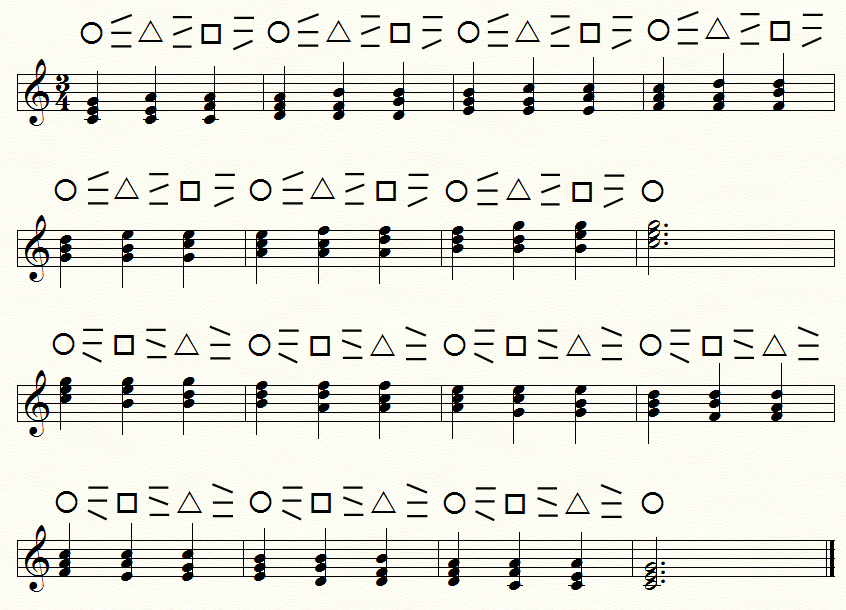
Run through this at least two or three times, until your fingering settles down and you're actually choosing the notes and fingers.
Pattern Two in C
Recall that in Pattern Two ascending, you:
- Start from a root position chord (circle) but take the top two notes up a step to make a second inversion chord (square).
- Then the middle note goes back down a step to make a first inversion chord (triangle symbol).
- Then the bottom two notes go up a step to get back to a root position chord (circle).
Rehearse the pattern or study the voice movement diagrams carefully as you read through.
Descending, you:
- Start from a root position chord (circle) and take the bottom two notes down a step to make a first inversion chord (triangle).
- Then the middle note goes back up a step to make a second inversion chord (square).
- Then the top two notes go down a step to get back to a root position chord (circle).
Play Pattern Two in C, once using 1-3-5 for the root position (circle) chords, and once with 1-2-4 (where convenient).
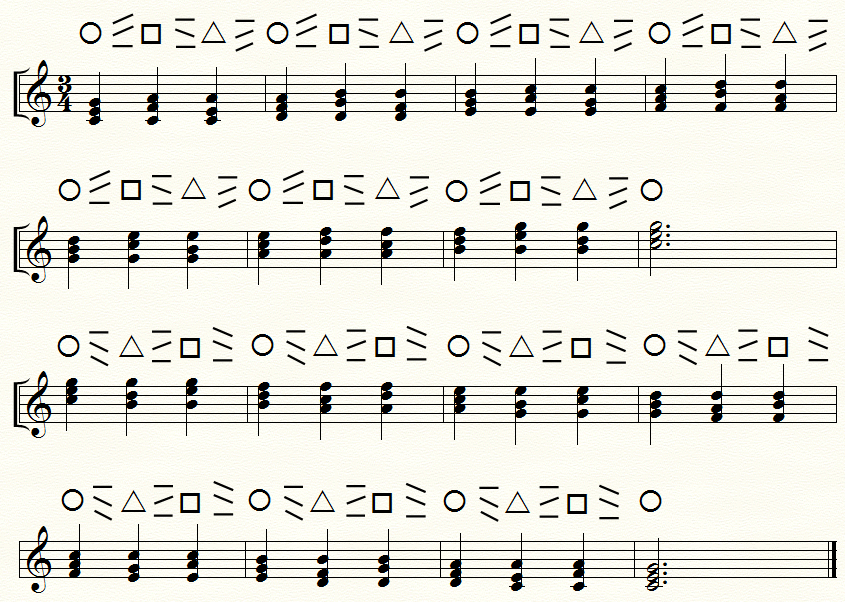
The hybrid Pattern Three in C
Pattern Three ascending uses one bar of Pattern Two followed by one bar of Pattern One, alternating over the whole octave.
Check that you can see the two-bar pattern in C, ascending.
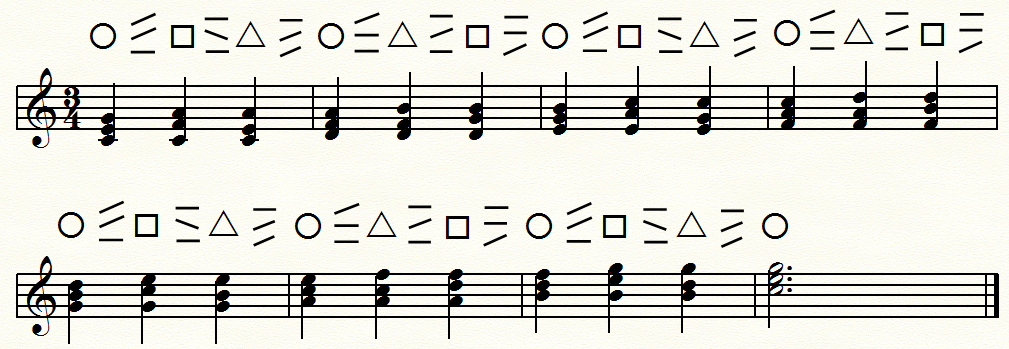
Watch the first half (ascending) of the video, listening carefully. You should be able to hear the difference between the two patterns/bars.
The video performance uses 1-2-4 for root position (circle) chords, where convenient.
Pattern Three descending starts with Pattern One, then alternating Pattern Two. This is just for musical reasons.
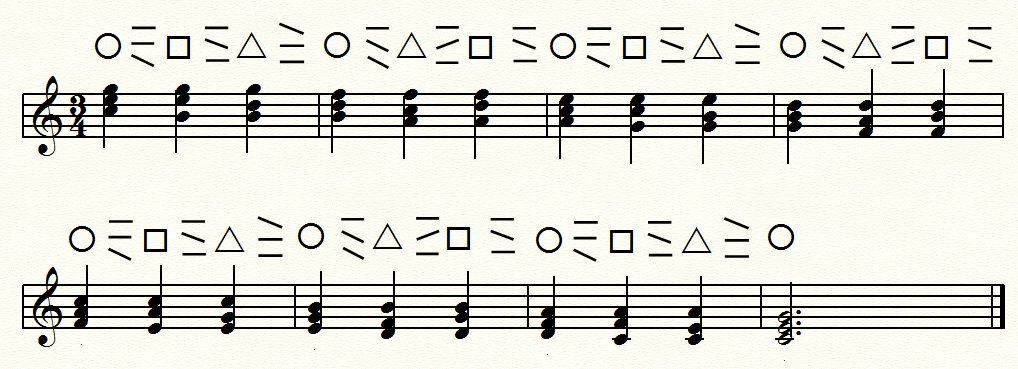
Watch the second half of the video to see/hear the two-bar movement pattern.
Then play the hybrid Pattern Three in C right through. You can play from the music even if you 'can't read music', just by following the voice movement diagrams.
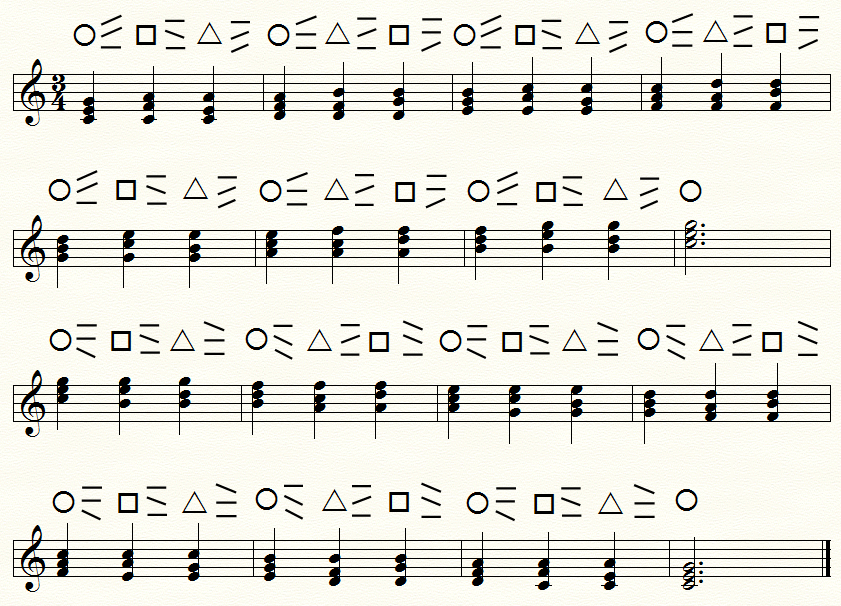
Now go on to Page Five and master Pattern Three in D.
Hope you're enjoying studying with Musicarta! Come back soon!
|
OUT NOW! |
THE MUSICARTA BEAT & RHYTHM WORKBOOK At last! An effective approach to keyboard rhythm & syncopation skills. Learn more! |
ONLY $24.95! |
PATREON |
The MusicartaA methodical approach to keyboard syncopation for
|
PUBLICATIONS
exciting keyboard
creativity courses
CHORDS 101
WORKBOOK

~HANON~
video course

Musicarta
Patreon
PENTATONICS
WORKBOOK
video course

Creative Keyboard
video course

BEAT AND RHYTHM
WORKBOOK

- Volume 1 -

12-BAR PIANO
STYLES WORKBOOK

MUSICARTA MODES
WORKBOOK

PIANO STYLE

CANON PROJECT
video course

VARIATIONS
video course


- Piano Solo -
video course

- Piano Solo -


YouTube playlists





 THE LOGO
THE LOGO
